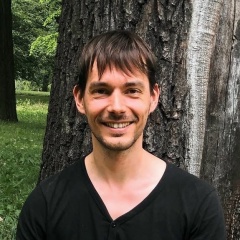ЧТО ТАКОЕ СИСТЕМА?
Согласно Берту Хеллингеру, к семейной системе человека относятся:
1) Его родители. В данном случае имеются в виду его биологические родители. Если человек не знает своих биологических родителей, или они уже умерли, они все равно относятся к его семейной системе.
В данном случае фраза «они относятся к его семейной системе» означает «в расстановках неоднократно наблюдались случаи, когда человек находился с ними в переплетении». Это не значит, что переплетение возникает всегда. В конкретной ситуации надо расставить и посмотреть.
Только такой ответ может быть дан на вопросы об экстракорпоральном оплодотворении (ЭКО), суррогатном материнстве, спермодонорстве и других технологиях зачатия и родительства.
Не имеет никакого значения, как долго человек был со своими родителями или как они с ним обращались или кого он называл «настоящими» родителями. Систему образует факт физического рождения, а не знания об этом или оценка этого.
То, что в расстановках может быть проявлена взаимосвязь с людьми, которые уже умерли или о которых нет никакой информации, выводит расстановочную практику за границы сознания и далее, за границы мира живых. «Расстановки – это шаманская работа, открывающая границы мира мертвых» - говорит Штефан Хаузнер, один из ведущих расстановщиков мира.
2) Его братья и сестры. Родные и неполнородные, живые и мертвые, известные и не известные, рожденные и не рожденные по разным причинам (аборты, выкидыши, замершая беременность, редукция, консервация эмбрионов и др.). На все конкретные вопросы о необычных ситуациях ответ: надо расставить и посмотреть.
3) Его дети. Также: живые и мертвые, рожденные и не рожденные, известные и не известные (для мужчин).
4) Его партнеры, супруги, возлюбленные. Случайные связи, платонические связи, длительные связи, счастливые и не счастливые, реальные и виртуальные – все эти партнеры могут быть членами системы человека, и в конкретных ситуациях надо расставить и посмотреть.
5) Его дяди и тети (братья и сестры родителей). Родные и неполнородные, живые и мертвые, известные и не известные, рожденные и нерожденные. В расстановках замечено, что переплетение с дядями и тетями по каким-то причинам встречается довольно часто.
6) Его бабушки и дедушки. Живые и уже умершие, известные и не известные. Переплетение через поколение назад также встречается довольно часто.
7) Братья и сестры бабушек и дедушек, прабабушки и прадедушки, более дальние предки. Живые и уже умершие, не зависимо от того, какая информация о них известна и известно ли вообще о факте их существования. Берт Хеллингер говорит, что дальние предки принадлежат к семейной системе, если у них была особая или тяжелая судьба. Невозможно описать точно, какую судьбу можно называть особой, а какую нет. Это может быть болезнь или особенно мучительная смерть, инвалидность, потеря имущества, участие в военных действиях. С другой стороны, то, что мы сейчас считаем особенно мучительным, в прежние времена было в порядке вещей и люди не отрицали такой опыт. Например, голод, потеря детей во младенчестве, землетрясения (в определенной местности) были повседневным обычным опытом, и не образовывали переплетение. В конкретных ситуациях: надо расставить и посмотреть.
8) И другие люди, связанные с членами семейной системы отношениями масштаба жизни и смерти. Что это за отношения? Это отношения лишения жизни и спасения жизни, предоставления значимых ресурсов и лишения их. Расстановки не связаны с моралью, и системные взаимосвязи в равной степени образуют такие события, как убийство члена семьи или когда член семьи совершил убийство, ограбление или воровство, совершенное как членом семьи, так и то, от которого член семьи пострадал, спасение жизни, помощь, совершенная членами семьи или в их адрес. Создают ли семейные взаимосвязи убийства, совершенные на войне или спасение жизни, совершенное врачом, а также многие другие вопросы получают ответ только на практике: надо расставить и посмотреть.
Таким образом, понятие семейной системы выходит за рамки кровного родства или сексуальных связей. Связь создают отношения масштаба жизни и смерти, в том числе отношения любви.
Определение семейной системы не является «теоретическим», это просто описание многочисленных расстановочных наблюдений. Время от времени эти наблюдения расширяются, определение меняется. Переплетение нельзя вычислить из этого определения, надо расставить и посмотреть.
Елена Веселаго
Согласно Берту Хеллингеру, к семейной системе человека относятся:
1) Его родители. В данном случае имеются в виду его биологические родители. Если человек не знает своих биологических родителей, или они уже умерли, они все равно относятся к его семейной системе.
В данном случае фраза «они относятся к его семейной системе» означает «в расстановках неоднократно наблюдались случаи, когда человек находился с ними в переплетении». Это не значит, что переплетение возникает всегда. В конкретной ситуации надо расставить и посмотреть.
Только такой ответ может быть дан на вопросы об экстракорпоральном оплодотворении (ЭКО), суррогатном материнстве, спермодонорстве и других технологиях зачатия и родительства.
Не имеет никакого значения, как долго человек был со своими родителями или как они с ним обращались или кого он называл «настоящими» родителями. Систему образует факт физического рождения, а не знания об этом или оценка этого.
То, что в расстановках может быть проявлена взаимосвязь с людьми, которые уже умерли или о которых нет никакой информации, выводит расстановочную практику за границы сознания и далее, за границы мира живых. «Расстановки – это шаманская работа, открывающая границы мира мертвых» - говорит Штефан Хаузнер, один из ведущих расстановщиков мира.
2) Его братья и сестры. Родные и неполнородные, живые и мертвые, известные и не известные, рожденные и не рожденные по разным причинам (аборты, выкидыши, замершая беременность, редукция, консервация эмбрионов и др.). На все конкретные вопросы о необычных ситуациях ответ: надо расставить и посмотреть.
3) Его дети. Также: живые и мертвые, рожденные и не рожденные, известные и не известные (для мужчин).
4) Его партнеры, супруги, возлюбленные. Случайные связи, платонические связи, длительные связи, счастливые и не счастливые, реальные и виртуальные – все эти партнеры могут быть членами системы человека, и в конкретных ситуациях надо расставить и посмотреть.
5) Его дяди и тети (братья и сестры родителей). Родные и неполнородные, живые и мертвые, известные и не известные, рожденные и нерожденные. В расстановках замечено, что переплетение с дядями и тетями по каким-то причинам встречается довольно часто.
6) Его бабушки и дедушки. Живые и уже умершие, известные и не известные. Переплетение через поколение назад также встречается довольно часто.
7) Братья и сестры бабушек и дедушек, прабабушки и прадедушки, более дальние предки. Живые и уже умершие, не зависимо от того, какая информация о них известна и известно ли вообще о факте их существования. Берт Хеллингер говорит, что дальние предки принадлежат к семейной системе, если у них была особая или тяжелая судьба. Невозможно описать точно, какую судьбу можно называть особой, а какую нет. Это может быть болезнь или особенно мучительная смерть, инвалидность, потеря имущества, участие в военных действиях. С другой стороны, то, что мы сейчас считаем особенно мучительным, в прежние времена было в порядке вещей и люди не отрицали такой опыт. Например, голод, потеря детей во младенчестве, землетрясения (в определенной местности) были повседневным обычным опытом, и не образовывали переплетение. В конкретных ситуациях: надо расставить и посмотреть.
8) И другие люди, связанные с членами семейной системы отношениями масштаба жизни и смерти. Что это за отношения? Это отношения лишения жизни и спасения жизни, предоставления значимых ресурсов и лишения их. Расстановки не связаны с моралью, и системные взаимосвязи в равной степени образуют такие события, как убийство члена семьи или когда член семьи совершил убийство, ограбление или воровство, совершенное как членом семьи, так и то, от которого член семьи пострадал, спасение жизни, помощь, совершенная членами семьи или в их адрес. Создают ли семейные взаимосвязи убийства, совершенные на войне или спасение жизни, совершенное врачом, а также многие другие вопросы получают ответ только на практике: надо расставить и посмотреть.
Таким образом, понятие семейной системы выходит за рамки кровного родства или сексуальных связей. Связь создают отношения масштаба жизни и смерти, в том числе отношения любви.
Определение семейной системы не является «теоретическим», это просто описание многочисленных расстановочных наблюдений. Время от времени эти наблюдения расширяются, определение меняется. Переплетение нельзя вычислить из этого определения, надо расставить и посмотреть.
Елена Веселаго
WHAT IS THE SYSTEM?
According to Bert Hellinger, the family system of a person includes:
1) His parents. In this case, his biological parents are meant. If a person does not know his biological parents, or they have already died, they still belong to his family system.
In this case, the phrase "they relate to his family system" means "in the constellations there were repeatedly cases when a person was intertwined with them." This does not mean that interweaving always arises. In a specific situation, you need to arrange and see.
Only such an answer can be given to questions about in vitro fertilization (IVF), surrogacy, sperm donation and other technologies of conception and parenthood.
It does not matter how long the person has been with his parents or how they have treated him or whom he called “real” parents. The system is formed by the fact of physical birth, and not by knowledge of it or an assessment of it.
The fact that in the constellations there may be a relationship with people who have already died or about whom there is no information, takes the constellation practice beyond the boundaries of consciousness and further beyond the boundaries of the living world. “Constellations are shamanistic work that opens the borders of the world of the dead,” says Stefan Hausner, one of the world's leading constellators.
2) His brothers and sisters. Native and incomplete, living and dead, known and not known, born and not born for various reasons (abortion, miscarriage, missed pregnancy, reduction, preservation of embryos, etc.). The answer to all specific questions about unusual situations is: you need to arrange and look.
3) His children. Also: living and dead, born and not born, known and not known (for men).
4) His partners, spouses, lovers. Random relationships, platonic relationships, long-term relationships, happy and not happy, real and virtual - all these partners can be members of the human system, and in specific situations you need to arrange and look.
5) His uncles and aunts (brothers and sisters of parents). Native and half-born, living and dead, known and not known, born and unborn. In the constellations, it was noted that interlacing with uncles and aunts for some reason is quite common.
6) His grandparents. Alive and already dead, known and unknown. Interweaving a generation ago is also quite common.
7) Brothers and sisters of grandparents, great-grandmothers and great-grandfathers, more distant ancestors. Alive and already dead, regardless of what information about them is known and whether it is known at all about the fact of their existence. Bert Hellinger says that distant ancestors belong to the family system if they had a special or difficult fate. It is impossible to describe exactly which fate can be called special and which is not. This can be a disease or a particularly painful death, disability, loss of property, participation in hostilities. On the other hand, what we now consider to be especially painful, in the past, was in the order of things and people did not deny such an experience. For example, hunger, the loss of children in infancy, earthquakes (in a particular area) were everyday routine experiences, and did not form a weave. In specific situations: you need to arrange and see.
8) And other people connected with members of the family system by relationships of the scale of life and death. What kind of relationship is this? This is a relationship of depriving life and saving life, providing meaningful resources and depriving them. Constellations are not related to morality, and systemic interactions equally form events such as the murder of a family member or when a family member committed a murder, robbery or theft committed both by a family member and the one the family member suffered from, saving his life, help committed by family members or addressed to them. Whether family relationships create murders committed in the war or life saving committed by a doctor, as well as many other questions, can only be answered in practice: you need to arrange and watch.
Thus, the concept of a family system goes beyond blood relationship or sexual relations. Relationships create relationships of the scale of life and death, including relationships of love.
The definition of a family system is not “theoretical”; it is simply a description of numerous constellation observations. From time to time, these observations expand, the definition changes. The interlacing cannot be calculated from this definition, it is necessary to arrange and look.
Elena Veselago
According to Bert Hellinger, the family system of a person includes:
1) His parents. In this case, his biological parents are meant. If a person does not know his biological parents, or they have already died, they still belong to his family system.
In this case, the phrase "they relate to his family system" means "in the constellations there were repeatedly cases when a person was intertwined with them." This does not mean that interweaving always arises. In a specific situation, you need to arrange and see.
Only such an answer can be given to questions about in vitro fertilization (IVF), surrogacy, sperm donation and other technologies of conception and parenthood.
It does not matter how long the person has been with his parents or how they have treated him or whom he called “real” parents. The system is formed by the fact of physical birth, and not by knowledge of it or an assessment of it.
The fact that in the constellations there may be a relationship with people who have already died or about whom there is no information, takes the constellation practice beyond the boundaries of consciousness and further beyond the boundaries of the living world. “Constellations are shamanistic work that opens the borders of the world of the dead,” says Stefan Hausner, one of the world's leading constellators.
2) His brothers and sisters. Native and incomplete, living and dead, known and not known, born and not born for various reasons (abortion, miscarriage, missed pregnancy, reduction, preservation of embryos, etc.). The answer to all specific questions about unusual situations is: you need to arrange and look.
3) His children. Also: living and dead, born and not born, known and not known (for men).
4) His partners, spouses, lovers. Random relationships, platonic relationships, long-term relationships, happy and not happy, real and virtual - all these partners can be members of the human system, and in specific situations you need to arrange and look.
5) His uncles and aunts (brothers and sisters of parents). Native and half-born, living and dead, known and not known, born and unborn. In the constellations, it was noted that interlacing with uncles and aunts for some reason is quite common.
6) His grandparents. Alive and already dead, known and unknown. Interweaving a generation ago is also quite common.
7) Brothers and sisters of grandparents, great-grandmothers and great-grandfathers, more distant ancestors. Alive and already dead, regardless of what information about them is known and whether it is known at all about the fact of their existence. Bert Hellinger says that distant ancestors belong to the family system if they had a special or difficult fate. It is impossible to describe exactly which fate can be called special and which is not. This can be a disease or a particularly painful death, disability, loss of property, participation in hostilities. On the other hand, what we now consider to be especially painful, in the past, was in the order of things and people did not deny such an experience. For example, hunger, the loss of children in infancy, earthquakes (in a particular area) were everyday routine experiences, and did not form a weave. In specific situations: you need to arrange and see.
8) And other people connected with members of the family system by relationships of the scale of life and death. What kind of relationship is this? This is a relationship of depriving life and saving life, providing meaningful resources and depriving them. Constellations are not related to morality, and systemic interactions equally form events such as the murder of a family member or when a family member committed a murder, robbery or theft committed both by a family member and the one the family member suffered from, saving his life, help committed by family members or addressed to them. Whether family relationships create murders committed in the war or life saving committed by a doctor, as well as many other questions, can only be answered in practice: you need to arrange and watch.
Thus, the concept of a family system goes beyond blood relationship or sexual relations. Relationships create relationships of the scale of life and death, including relationships of love.
The definition of a family system is not “theoretical”; it is simply a description of numerous constellation observations. From time to time, these observations expand, the definition changes. The interlacing cannot be calculated from this definition, it is necessary to arrange and look.
Elena Veselago

У записи 19 лайков,
7 репостов,
987 просмотров.
7 репостов,
987 просмотров.
Эту запись оставил(а) на своей стене Ирина Бурова







































